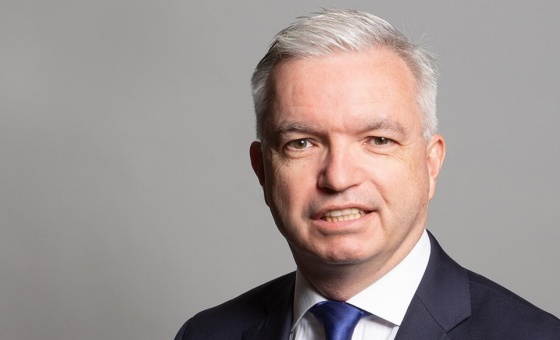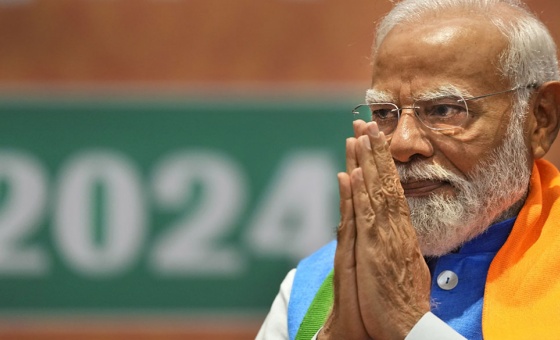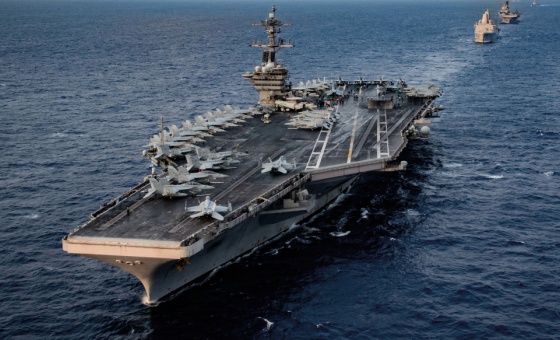This is the last article you can read this month
You can read more article this month
You can read more articles this month
Sorry your limit is up for this month
Reset on:
Please help support the Morning Star by subscribing here
NEWSPAPERS are currently pointing at the danger of “fake news.” And by “fake news,” they mean the dubious fringe websites that pumped out false, usually pro-Trump, propaganda during the US election.
Thanks to the web generally and Facebook in particular, this “fake news” has had a big audience.
It’s a real problem. But the mainstream solution is completely wrong.
The main news outlets want some kind of stamp of approval, so their news is treated as sensible and “fringe” outlets are treated with disdain.
They miss the big problem: “Fringe” media has grown precisely because the established media has repeatedly printed “fake news” itself. This has worn away trust in the mainstream and sometimes opened the door to even faker news.
The most obvious example is Iraq. Here, the most “respectable” media printed fake news over weapons of mass destruction (WMD) which paved the way for Tony Blair and George Bush to wage bloody war on Iraq, the effects of which we are still living with today.
In fact, the newspapers’ fake news went well beyond any of the government’s dubious claims.
I will give just one example of a repeated fraud.
In 1995, the Sunday Times ran a story for three consecutive issues about a “defecting Iraqi nuclear scientist” who “vanished” — possibly kidnapped or murdered “while trying to reveal details of the secret nuclear weapons programme that president Saddam Hussein has been hiding from United Nations inspectors.”
The story was completely false. The “scientist” Khidir Hamza had not been kidnapped. The “documents” — supposedly showing an active nuclear weapons programme — were fake.
The International Atomic Energy Authority — the official nuclear weapons inspectors — looked at the papers and concluded: “On the basis of all the evidence available, these documents are not authentic.”
Hamza’s claims were part of a campaign to keep sanctions on Saddam Hussein’s regime — sanctions that did much more damage to the people of Iraq than their dictator.
The Sunday Times never reported that international inspectors ruled their story was based on fake documents.
Nor did any other Western newspaper, despite the Atomic Energy Authority making its ruling publicly.
Saddam’s son-in-law, general Hussein Kamal, who himself defected in 1995, told the CIA that Hamza was “useless” and “a professional liar.” But the fake news from 1995 remained unexposed.
So a fresh wave of fake news could be churned out after the September 11 2001 attacks which led to a campaign for a new war on Iraq.
Most people remember this as governments issuing dossiers full of fake stories about Iraqi WMD that turned out not to exist.
But actually, the newspapers added a whole other layer of fake news. Stories so false that the government wouldn’t put them in its dossiers.
Hamza was the source of many false stories.
On October 29 2001, the Times ran a story under the headline “Saddam Must Go” in which Daniel Finkelstein told the the tale of Hamza building a nuclear bomb for Saddam. Finkelstein wrote: “Hamza had helped Saddam to build a crude device. Only the fact that it was too big to attach to a missile prevented Saddam from being able to fire it at Israel.”
This was fake. Saddam wanted nuclear weapons in the 1980s and ’90s. But was unable to build them.
In June 2002, historian Christopher Andrew reported in The Times: “By the outbreak of the Gulf War, [Saddam’s] Atomic Energy Department had nearly completed the manufacture of a nuclear weapon.
“But, according to his chief nuclear scientist, Khidir Hamza, it was ‘about the size of a refrigerator — far too big to fit into a missile warhead’.” This never happened.
In August 2002, Hamza gave evidence before a Senate committee. The Financial Times, the Evening Standard, the Daily Mail, the Daily Telegraph, The Sun, The Times and The Sunday Times all reported the hearings without any scepticism.
They described Hamza without any qualification about his expertise, calling him “the former director of Iraq’s nuclear weapons programme” and how he “told senators that Iraq has enough uranium to produce three nuclear weapons by 2005.”
Only one newspaper, the Morning Star, pointed out this was fake news. Felicity Arbuthnot reported that Hamza had indeed made his false claims to the Senate committee. She accurately described him as “a controversial wild-card [...] who has variously been accused of having minimal knowledge of the nuclear industry and being paid handsomely by the CIA.”
News got even faker in September 2002. The Times had a 1,400 word piece based on an interview with Hamza, saying he “was at the heart of the Iraqi nuclear programme from its inception and is regarded as the ‘father’ of the Baghdad bomb.”
In the piece, Hamza claimed: “Saddam could be in a position to make three nuclear weapons within the next few months, if he has not already done so.”
Hamza claimed these inspectors could not “detect the nuclear assembly line” because it was “concealed underground or in basements or buildings that outwardly seem normal.”
This completely fake story was repeated in days by the Express, the Independent, the Evening Standard and the Daily Mail without any scepticism or qualification.
The Sunday Mirror went further with a piece by Hamza himself. It claimed: “Saddam’s top nuclear weapons scientist exclusively reveals to the Sunday Mirror today that the dictator has enough nuclear material for three nuclear devices.
“Dr Khidir Hamza, who was Iraq’s nuclear bombmaker for 24 years before defecting to the West, claims Saddam has 10 tonnes of natural uranium. And he reveals an Iraqi intelligence team has taken delivery in Africa of spent fuel rods from a Russian nuclear reactor.” All of this was exclusive because it was imaginary.
Again, the Morning Star stood almost entirely alone up against the spurt of fake news triggered by the Hamza articles.
Former weapons inspector Scott Ritter correctly pointed out in a September 17 2002 Morning Star article that Hamza wasn’t the “father” of anything atomic. He “was an obscure member of the Iraqi nuclear team” who had been “fired, sent back into obscurity” before he left Iraq.
Ritter said the problem was that British newspapers had no guard against fake news, writing “[Hamza] doesn’t have the access to information that he claims to have and to cite him on the front page of a prominent British newspaper and to give credence to what he’s saying is part and parcel of the problem we are facing here.”
Ritter was right. Hamza had been publicly linked to forgeries since 1995. But almost every major British newspaper used him to publish more fake news. And when his promised WMD failed to surface from the bloody wreckage of Iraq, they didn’t have any inquiry into why they got it so wrong. Their own fake news led to huge bloodshed and a loss of authority.
If the media wants to stop the growth of fake news, it needs to stop publishing it.
We need your support to keep running. If you like what you read please donate by clicking here








